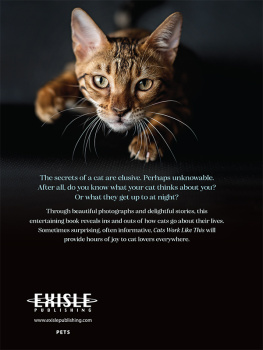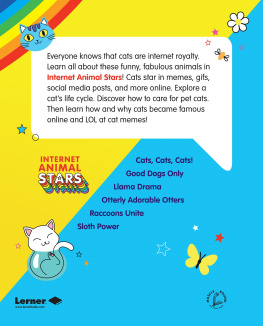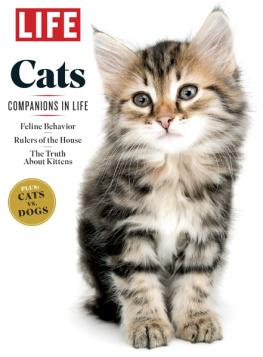ALSO BY WENDY CHRISTENSEN
Empire of Ancient Egypt ( Great Empires of the Past series)
The Humane Society of the United States Complete Guide to Cat Care by Wendy Christensen
Why Cats Do That: A Collection of Curious Kitty Quirks by Karen Anderson, illustrated by Wendy Christensen
Daddy Day, Daughter Day by Larry King and Chaia King, illustrated by Wendy Christensen
Outsmarting
Cats
How to Persuade the
Felines in Your Life to
Do What You Want
Second Edition
Wendy Christensen
Originally published in 2004 under the title Outwitting Cats,
a series concept created by Bill Adler Jr.

LYONS PRESS
Guilford, Connecticut
An imprint of Globe Pequot Press
With love and purrrrrrs to Jeff,
who makes everything possible.
Copyright 2004 and 2013 by Wendy Christensen
Photographs and illustrations copyright 2004 and 2013 by Wendy Christensen unless otherwise noted
ALL RIGHTS RESERVED. No part of this book may be reproduced or transmitted in any form by any means, electronic or mechanical, including photocopying and recording, or by any information storage and retrieval system, except as may be expressly permitted in writing from the publisher. Requests for permission should be addressed to Globe Pequot Press, Attn: Rights and Permissions Department, PO Box 480, Guilford, CT 06437.
Lyons Press is an imprint of Globe Pequot Press.
Editor: Meredith Dias
Text design and layout: Mary Ballachino
Library of Congress Cataloging-in-Publication Data is available on file.
ISBN 978-0-7627-8279-6
Printed in the United States of America
E-ISBN: 978-0-7627-9308-2
Contacting the author
Cat problems? Cat questions? Contact Wendy Christensen and ask:
www.wendycats.com
http://wendycats.etsy.com (Wendys handcrafted cat-themed jewelry)
E-mail: wendy@wendycats.com
Follow Wendy on Twitter: @CatTweats
Chapter 1
Introduction
And the Cat Came Back...
In 1985, a quiet revolution took place: Cats overtook dogs as Americas favorite companion animal. Fifty million pet cats extended their collective whiskers and edged ahead of forty-nine million dogs. The following year, felines extended their lead, and the gap has been widening ever since. According to the 2011/2012 National Pet Owners Survey, conducted by the American Pet Products Manufacturing Association (APPMA), over 86.4 million pampered, purring felines are now warming laps, snoozing in personalized kitty beds, and honing their claws on custom climbing trees in US homes. Today, 38.9 million US households are proud to call themselves cat homes.
This takeover was sweet, but it was a long time in coming. Though the feline family is ancient, humans and cats share a relatively brief history together. Compared to our long, close associations with domestic and companion animals, such as cattle and dogs, the twists and turns of the humancat relationship have occupied only a few thousand yearsthe merest blink of an eye on the time scale of evolution. Its only in the past 150 years or so that weve begun tinkering with feline evolution through deliberate selective breeding.
Cats were worshipped as gods in ancient Egypt; condemned as accomplices of the devil and slaughtered by the millions in medieval Europe; treasured by seafarers as lucky charms; banished to barns, granaries, and urban jungles to fend for themselves; beribboned and elevated with women and children on a Victorian pedestal of domestic bliss. And now theyve conquered the United States.
Through it all, the allure of the cat has persisted. In our busy, urbanized lives, increasingly cut off from the mysteries and rhythms of nature, we crave that thrilling aura of wildness that cats bring to our lives. We call them domestic cats, but its far from clear that house cats are truly domesticated. In many ways, theyre indistinguishable from their closest wild feline relative, the African wildcat ( Felis silvestris libyca ), and the other small wildcats of the world. Some biologists claim that our domestic cats and their small wild counterparts in Africa are really members of the same species. The term domestic cat, notes pundit George Will, is an oxymoron.
Trouble in Paradise
As weve taken the cat into our hearts and homes, certain... well, conflicts have arisen. Thats not too surprising, given the inherent behavior patterns and characteristics that Felis silvestris domesticus brings into our homes from his life in the wild:
- Relatively small (the average cat weighs eight to twelve pounds)
- Quadrupedal (four-legged) body structure
- Solitary nature
- Highly territorial
- High degree of self-sufficiency
- Incredible strength for body size
- Ultrasonic hearing
- Highly sensitive sense of smell
- Additional smell-taste sense (the vomeronasal organ)
- Scent-oriented communication strategy
- Night-capable, motion-sensitive vision
- Sharp, powerful, retractile claws
- Teeth designed as defensive and offensive weapons as well as tools
- Hyperalertness
- Built-in wariness about being touched
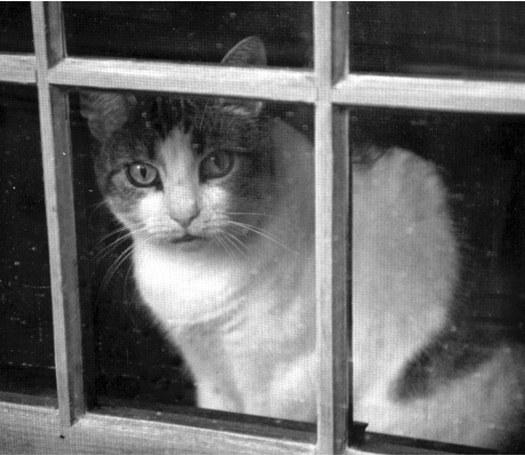
Bunny is not sure whether shed rather be indoors or out.
Exquisitely designed for life in the wild as a solitary, self-sufficient predator, the domestic cat is less well-adapted to life in the confines of our homes, subject to human needs, preferences, prejudices, and whims. To outsmart your cat, its important to remember that he has the same heightened sensitivity to the sights, sounds, and odors of your home as his wild cousins have to their habitats. So hes often going to act, and react, like the wild animal he still is, in so many ways.
Though hes pampered, well fed, and provided with everything he needs, whats important and meaningful to your house cat are pretty much the same things that are crucial to a bobcat prowling the snowy woods.
Can Cats Really Be Outsmarted?
Not only can you outsmart your cat, its something we humans are particularly good at. Outsmarting a cat means unraveling mysteries, solving riddles, decoding cryptograms, assembling puzzles, seeing the big picture, and detecting and analyzing patternsall skills at which the human brain excels.
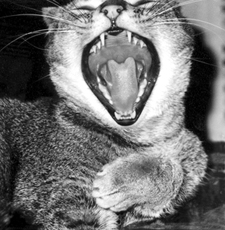
Can cats really be outsmarted?
Silver offers his opinion.
Outsmarting your cat means understanding the essential truth of feline nature: Cats are solitary, independent, territorial hunters. Theyre superbly well-engineered and successful predators, enjoying the luxury of living at or near the top of the food chain. Youd think they could relax. But, no. Supremely self-interested, theyre intensely concerned about resources: Will there be enough for me? Outsmarting your cat means taking advantage of his obsession with getting his share.
Outsmarting your cat means learning to look at the world through feline eyes. It means realizing that your cats behavior, especially behavior that seems naughty, perverse, spiteful, or just plain weird, makes perfect senseto your cat.
Outsmarting your cat means learning to accept his nature, and his behavior, with good graceor being prepared to offer him a better deal.
DISCOVER WHAT'S IMPORTANT TO YOUR CAT








